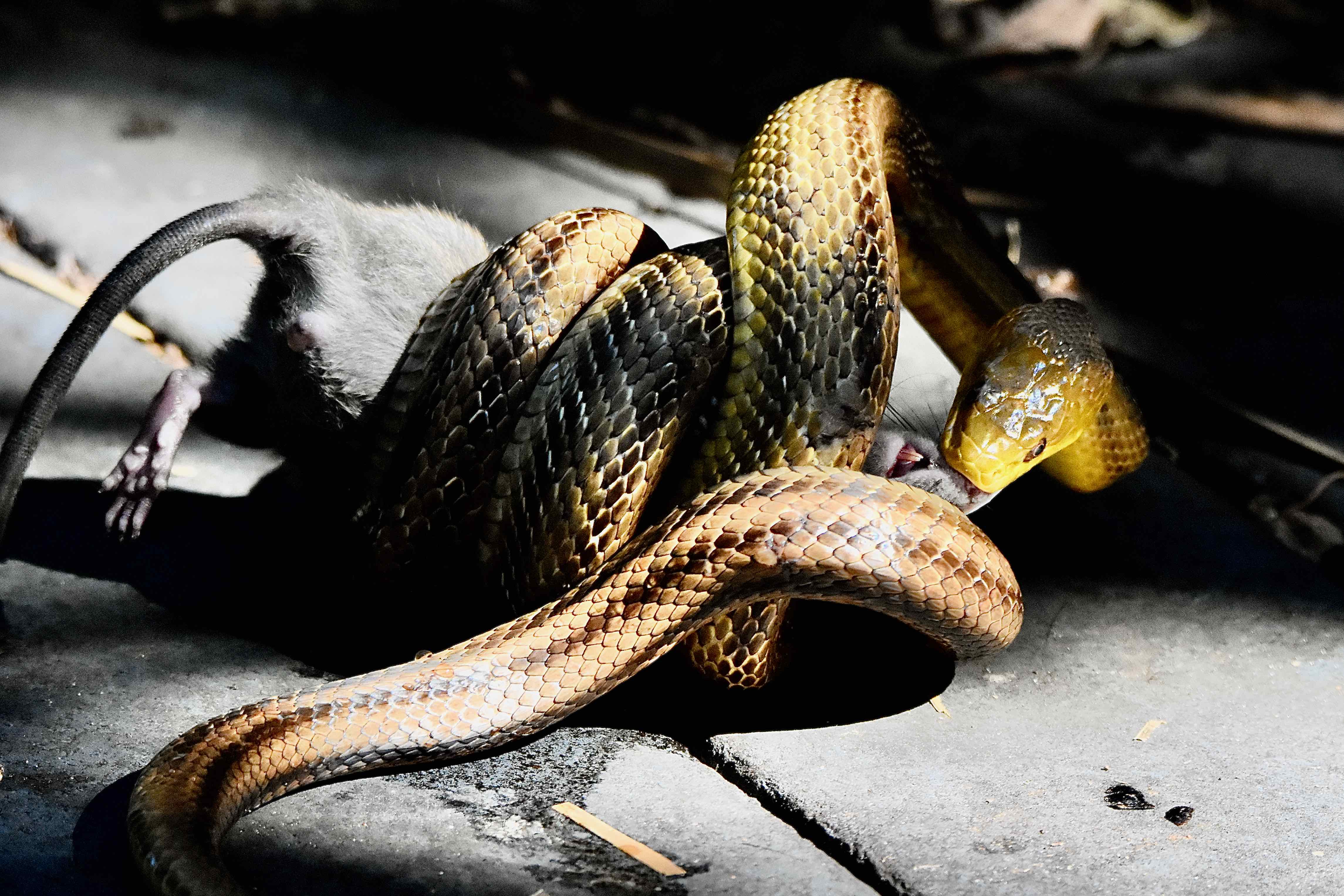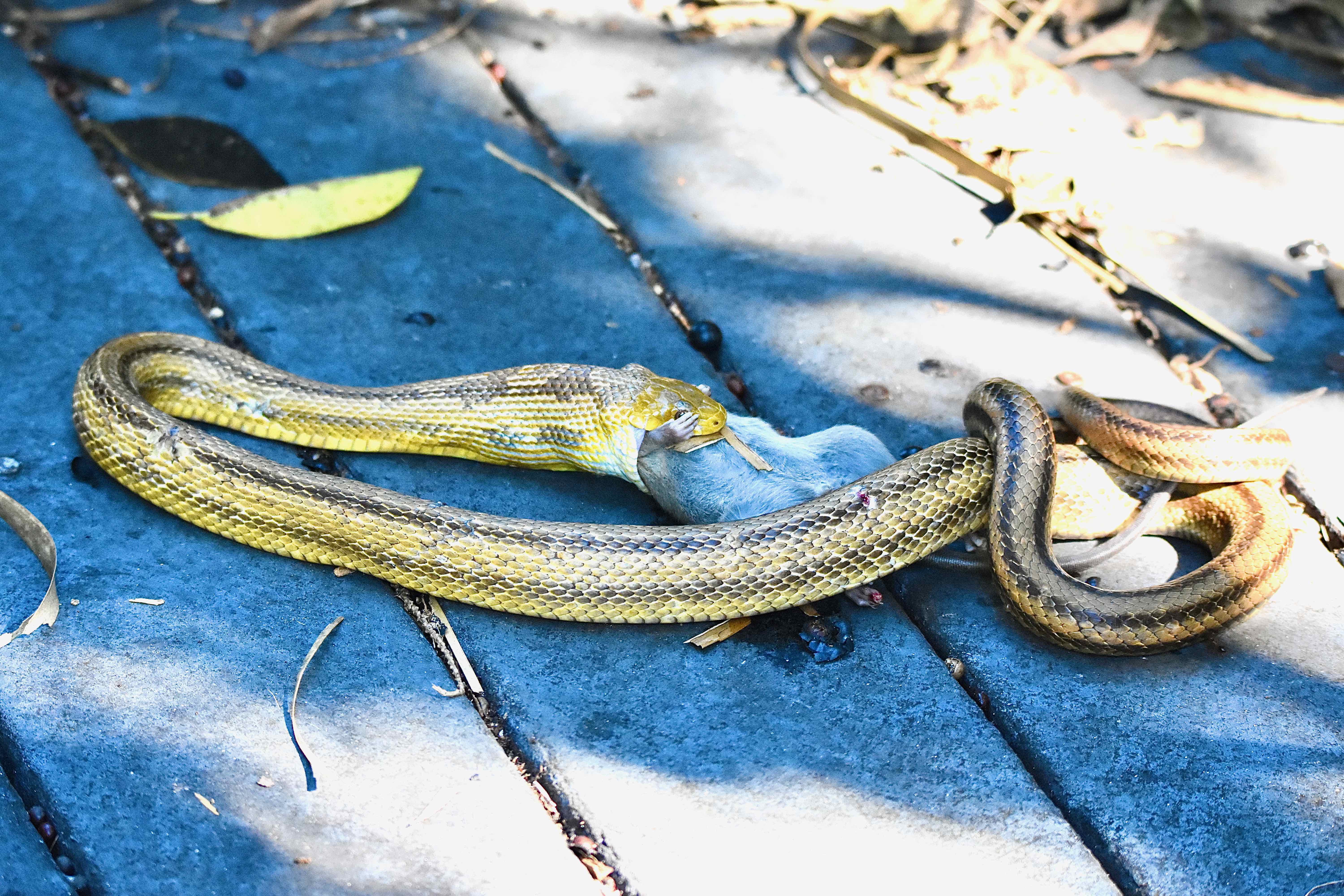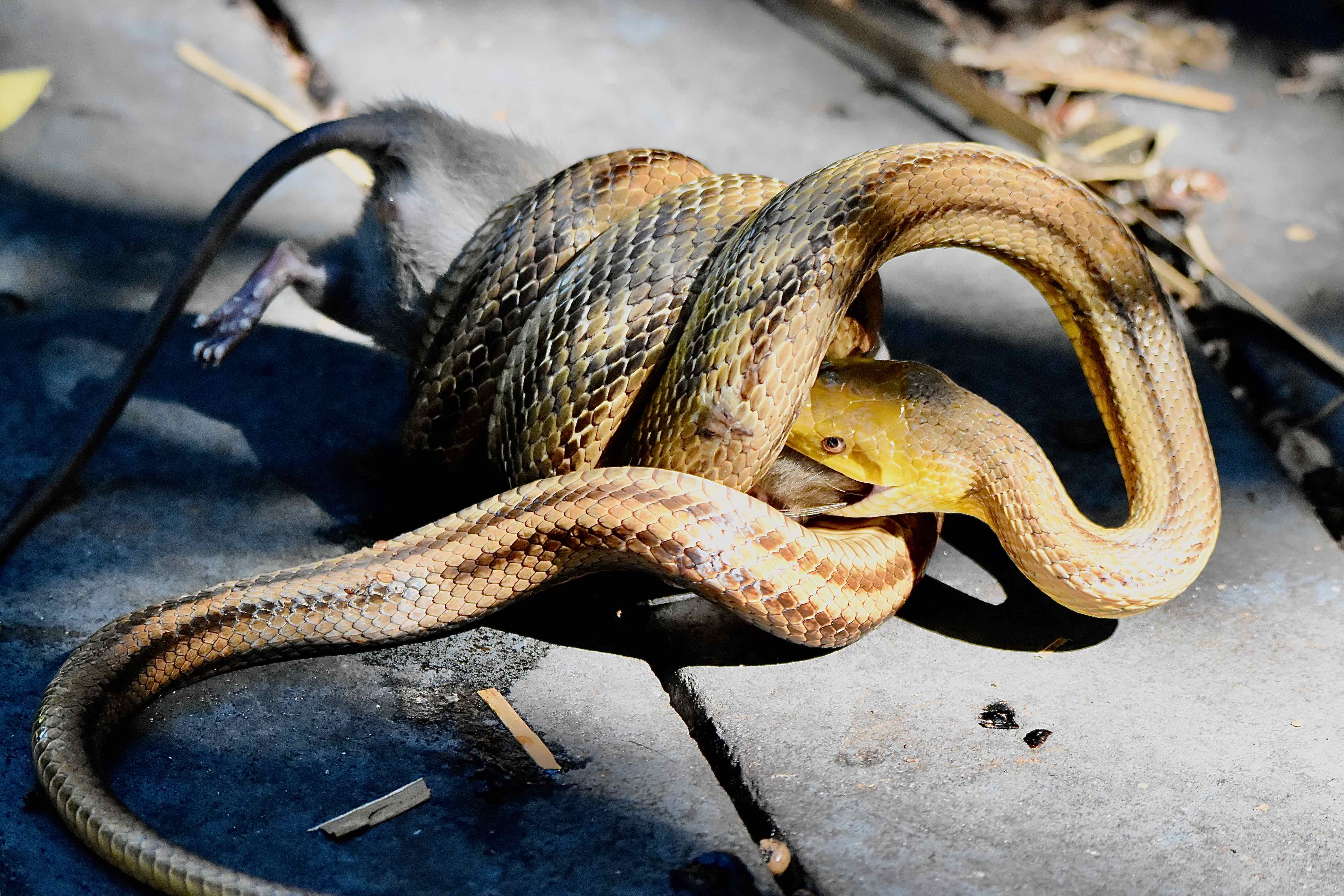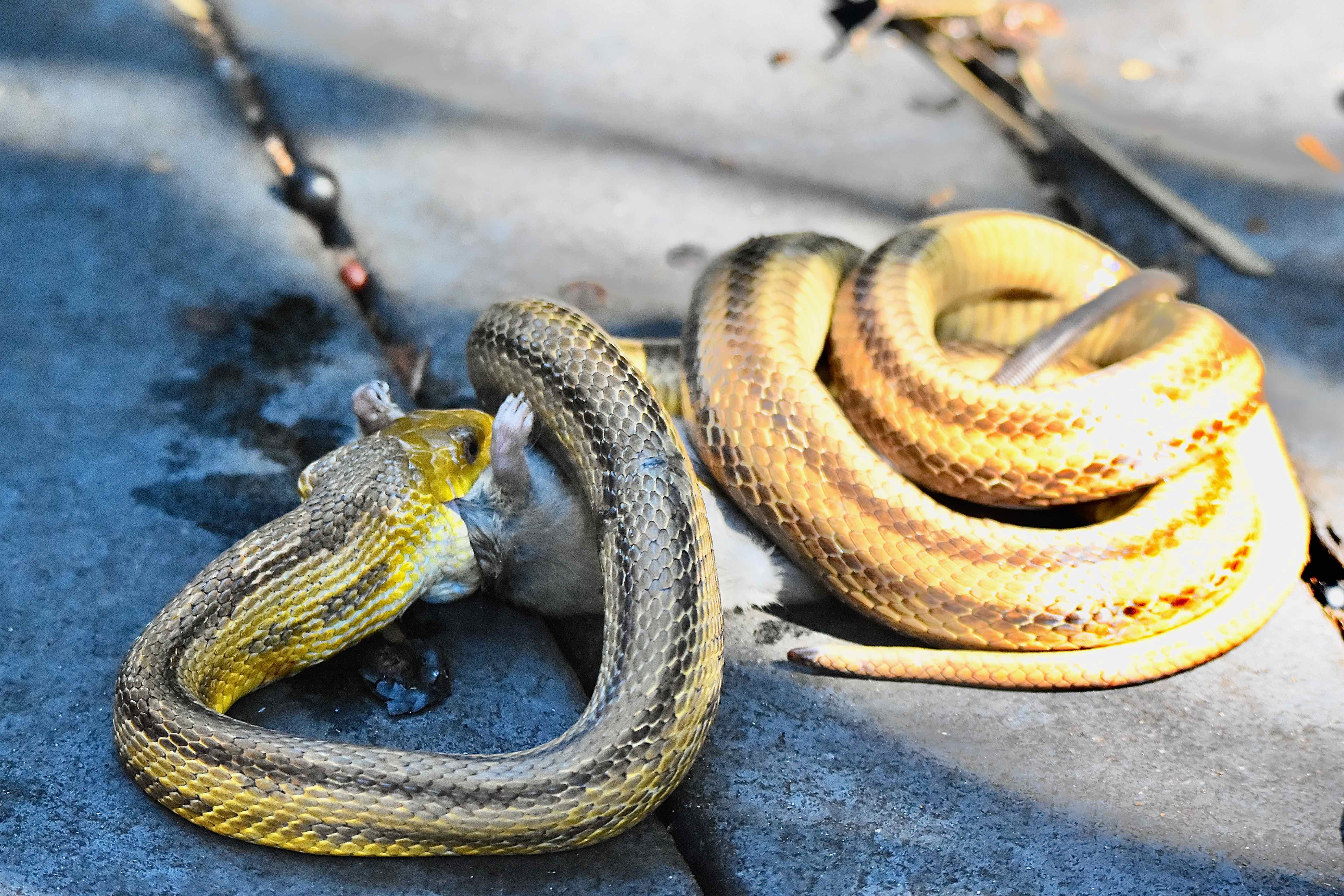
Yellow rat snake, photographed at the JN "Ding" Darling National Wildlife Refuge, Sanibel, Lee County, in October 2016.
This is a snake of many names. Almost all of them tell you it has a taste for rodent. For our purposes, we'll call it the yellow rat snake, Pantherophis alleghaniensis.
It is yellow, after all, and in these photos, it is in fact devouring a Sanibel rice rat. It can attain pretty good size, but unless you happen to be a rat or some other small creature, it's harmless. Actually, it's considered beneficial because it helps keep pest populations under control.
Despite the name, the yellow rat snake isn't always yellow — in some parts of the country it's actually black — but yellow, with two brown stripes on each side, is the most common color pattern in Florida. It can range from gray, with black splotches, to yellow to bright reddish orange. Length-wise, they typically go between three and six feet, with 90 inches the record, according to the Florida Museum of Natural History. It also has round pupils. Males and females have the same coloration, but males have longer tails. Its range includes most of Florida east of the Apalachicola River south to Key Largo. It's also found in a good chunk of North America east of the Appalachians into Canada.
As you might guess from the photographs on this page, the yellow rat snake is a constrictor; it kills its prey by grabbing it with its mouth, then wrapping its body around its victim, then squeezing it until it's dead. It is nonvenomous. (Note: snakes are either venomous or nonvenomous rather than poisonous or non.) Rats are a favorite target, but they will eat other rodents, lizards, frogs, birds and bird eggs.
In turn, young yellow rat snakes are targets for hawks, owls, foxes, raccoons and cats. But as adults they are less likely to end up as a meal.
Habitats include pinelands, hardwood hammocks, marshes, prairies, fields — and your backyard. It it is an excellent climber and is been known to work its way into attics, and live there undetected by the human inhabitants. It also will find cover under rocks and boards, in tree cavities and the boots of cabbage palms. Yellow rat snakes can burrow and they can swim. Like all snakes, they are cold-blooded; they are active at night during warmer weather, during the day when the temps dip.
Us humans tend to persecute yellow rat snakes like we do other snakes, out of fear and ignorance. Yellow rat snakes are not aggressive, and would much rather avoid confrontation than seek it. If frightened, they will freeze or slither away. A second line of defense: emitting a foul-smelling scent. Striking out at predators is a last resort. It is no threat to humans.
Up north, yellow rat snakes spend winter by "brumating" in a suitable place will have ample southern exposure. Brumation is similar to hibernation, but the snakes wake up from time to time to perform necessary functions, like getting water. They also will congregate with other snakes, emerging in the spring — earlier down south, later up north.
Breeding season is usually April into July; five weeks after mating, females will deposit between five and 27 eggs usually in hollow logs, which is the extent of motherly care. The eggs will hatch after two months, late summer into fall. The hatchlings are about a foot long or more. Like many other reptiles, temperatures during incubation determine the sex of the hatchlings, warmer means males, cooler females. The life span of a yellow rat snake can reach 20 years.
Other common names include: eastern rat snake, rat snake, chicken snake, Everglades rat snake, black rat snake, pilot snake and pilot rat snake. It is a member of Colubridae, a family of mostly constrictor snakes.



